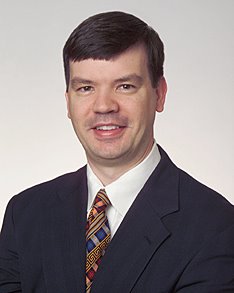
The Wall Street Journal had a front page story last week,"Covering the Uninsured, But Only up to $25,000" describing Tennessee's second experiment at expanding coverage of the uninsured by a program called CoverTN. A number of years ago, a program called Tenn-Care was introduced which was similar to Medicaid which greatly expanded the roles of the insured. Sounds great right? Well, the program was dramatically cut back (dropping 175,000 enrollees) in 2005 after it was bankrupting the state as it was consuming more then 1/3 of the budget. There's a good editorial from the 2004 Wall Street Journal "HillaryCare in Tennessee
The disaster that might have been for the entire country." outlining the massive failure of the program.
The new program (a "mini-medical" plan) features up to $25,000 of care (only $10-15,000 of which is for inpatient care) annually for premiums of about $50 a month. What happens when that cieling is reached? Well the patient will have to pay their bills, ask the hospitals for charity care, or (as commonly happens) just not pay anything and ignore the bill. Govenor Phil Bresden (DEMOCRAT-TN), who personally made a fortune strip-mining the health care system as the founder of a managed care company, is the auteur of this plan which is posed as a more pragmatic (read affordable) solution the the more ambitious programs proposed by Govenors Romney & Schwarzenegger in Massachusetts and California.
Alan Sager, a professor of health policy at Boston University, said that CoverTN is "flimsy insurance" that will "provide cover for employers to save money." University of Tennessee College of Medicine professor David Mirvis was slightly more charitable saying, "It may be better than nothing, but it's not real insurance."
Read the fine print of the article for the poison pills in how this program will actually work. A big advantage of the program is the "steep discounts" they theorize they will be able to extract from hospitals and doctors, with Gov Dresden saying "I don't have a problem with hospitals holding the bag. (for deficits in the program)". This attitude is typical of corporate insurance executives dealing with cost containment. BlueCross BlueShield of Tennessee, who would administer this plan, has proposed to pay approximately half of what it costs the hospital to provide care to CoverTN enrollees
Good luck finding widespread participation of physicians or hospitals who will be paid less then cost for their efforts and potentially losing tens (or hundreds) of thousands of dollars on enrolees who exceed their "salary cap" policy limits. Dr. Charles Handorf, president of the Tennessee Medical Association points out a practical problem with the program, "There are (already) virtually no specialists willing to participate in the program, because they know by the time the patient who gets sick is referred to them, all the coverage will be used up.". The whole program is one big shell game about shifting costs. The states seek to shift the costs to the Doctors & Hospitals, while employers seek to shift the costs of coverage to their employees and walk away from providing health insurance.
You can see others assessing this the same in articles like "Money issues stop CRMC's participation in CoverTN" , "Hospitals expect no gain from CoverTN",
I don't make this commentary to just throw jabs at Tennessee's program. There are no easy solutions to problems like funding health care. For the most part no one wants to discuss the tradeoffs. Ironically, presidential candidate, Sen. John Edwards (Dem), (who made tens of millions suing doctors and hospitals) is the only one honestly speaking about the cost involved. Tennessee voters rejected starting a state income tax program to help finance this which only makes the budget issues more painful.

























